Today’s recipe for Crempogau, or more correctly Crempog Furum, are based on an old recipe from the 1800’s and one that uses yeast.
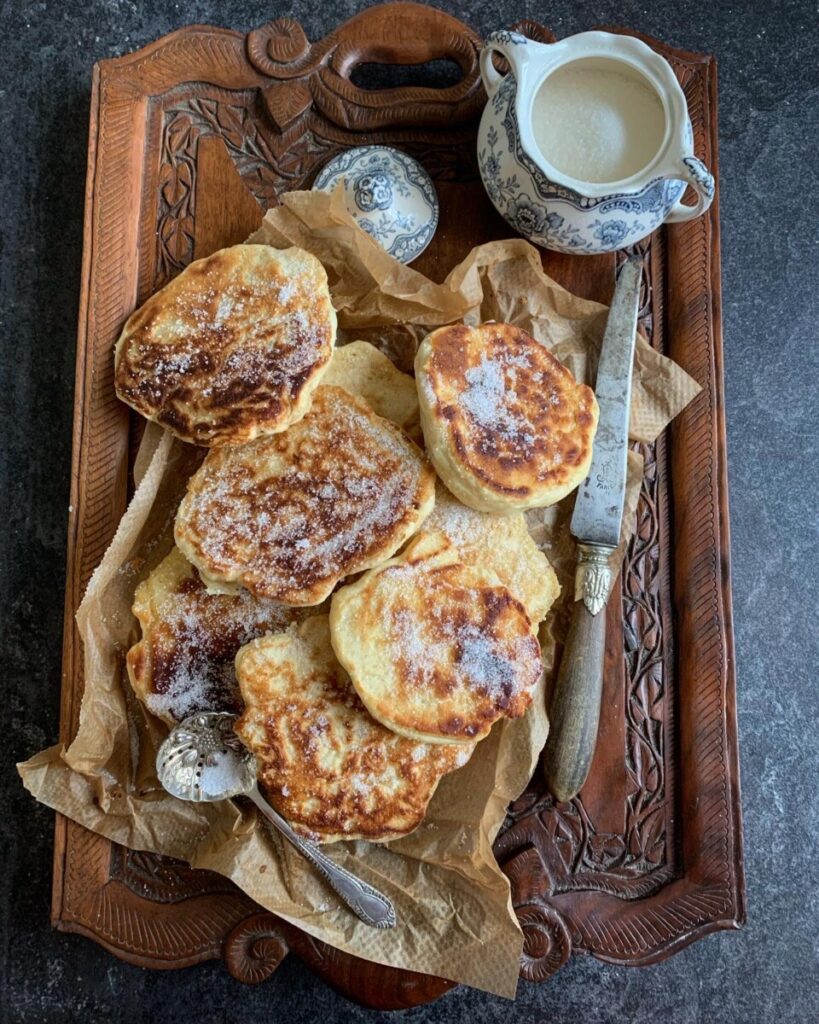
Welsh Crumpets (Pancakes) for St David’s Day
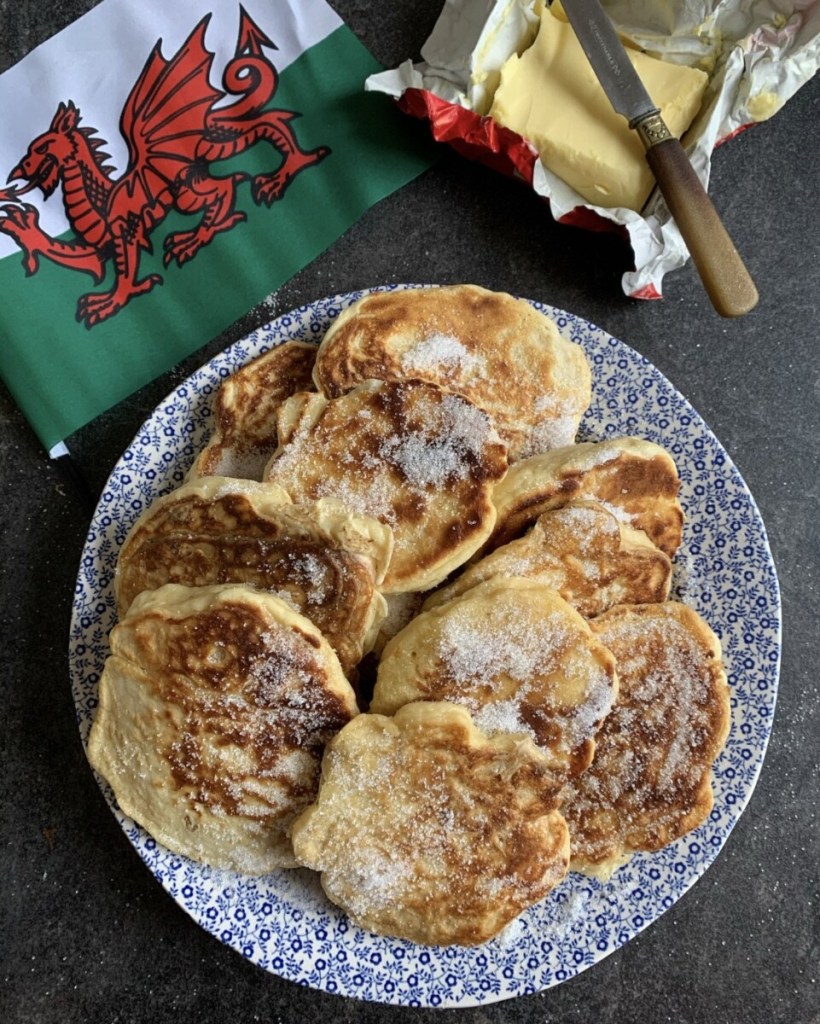
Today’s recipe for Crempogau, or more correctly Crempog Furum, are based on an old recipe from the 1800’s and one that uses yeast. Traditionally served warm and spread with butter and treacle, I’ve used golden syrup instead.
Welsh Crempog (Crempogau) are Welsh pancakes, which are similar to pikelets and crumpets, and are traditionally served on birthdays, St David’s day, Shrove Tuesday (Pancake Day) and also on Bonfire Night on the 5th November.

Most modern recipes for Welsh Crempog (Crempogau) use bicarbonate of soda as the raising agent, but older recipes use yeast, as I have today, which results in a thicker pancake with fewer “holes”, which resembles a crumpet more than a pancake.
As soon as they are cooked, traditionally on a bakedstone, (also known as a planc in Wales, or a griddle and girdle in England and Scotland) they are sprinkled with sugar for immediate eating, or, they are spread with butter, covered and kept warm in the oven before serving warm with the sugar sprinkled on afterwards.
They are also delicious when served cold with butter, jam and/or syrup.
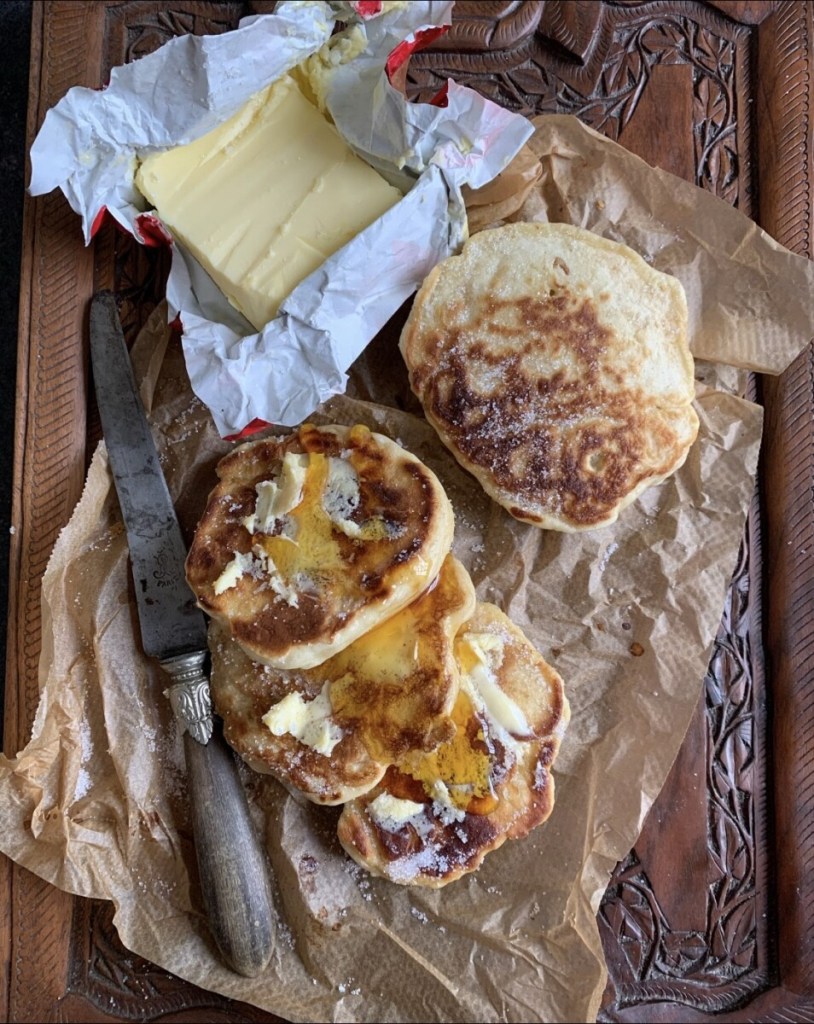
What’s in a Name?
Crempog, crempgau, Welsh light cakes, Ffroes, Pikelets, hot cakes, pancakes, gridle cakes, griddle cakes, crempog burum, Welsh crumpets, or just drop or dropped scones, so what’s in a name?
Each of the above is very regional, to Wales and the rest of the UK. My husband was born and grew up in Yorkshire, and he calls what I would think of as crumpets, piklelets.
And, within Wales, there are many names for today’s recipe for Welsh Crempog (Crempogau), which they are more commonly known as in North Wales, where I live.
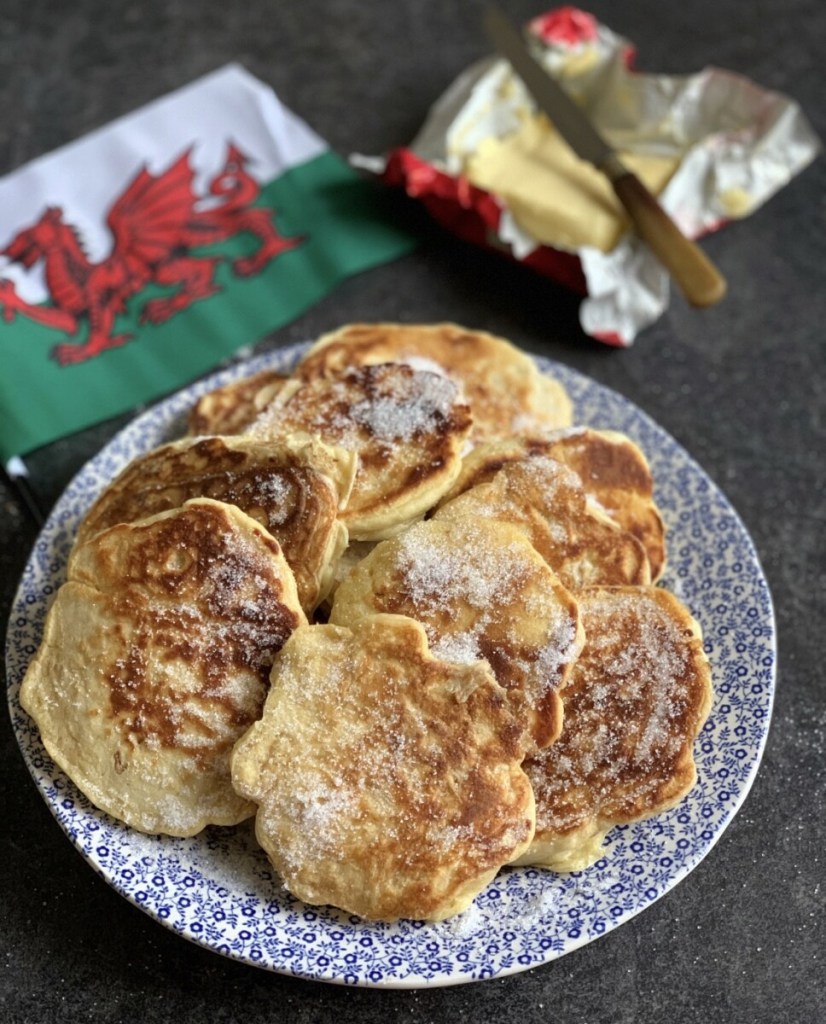
If we look at some of the names for these pancake type crumpets, you can see there is common etymology that links many of them. For example, Ffroes, which is another word for today’s Welsh Crempog (Crempogau) recipe, is thought to come from the Old English (Norman) name for Froise, which were deep fried pancakes.
Furthermore, it has been suggested that the word Crempog, is also linked to the Old English word for a “curled up pancake” which was called a Crompeht, the word crompeht meaning “crumpled”.
And, in within Wales, there are many names for today’s recipe for Welsh Crempog (Crempogau), as I will share below, taken from the Welsh Fare website.
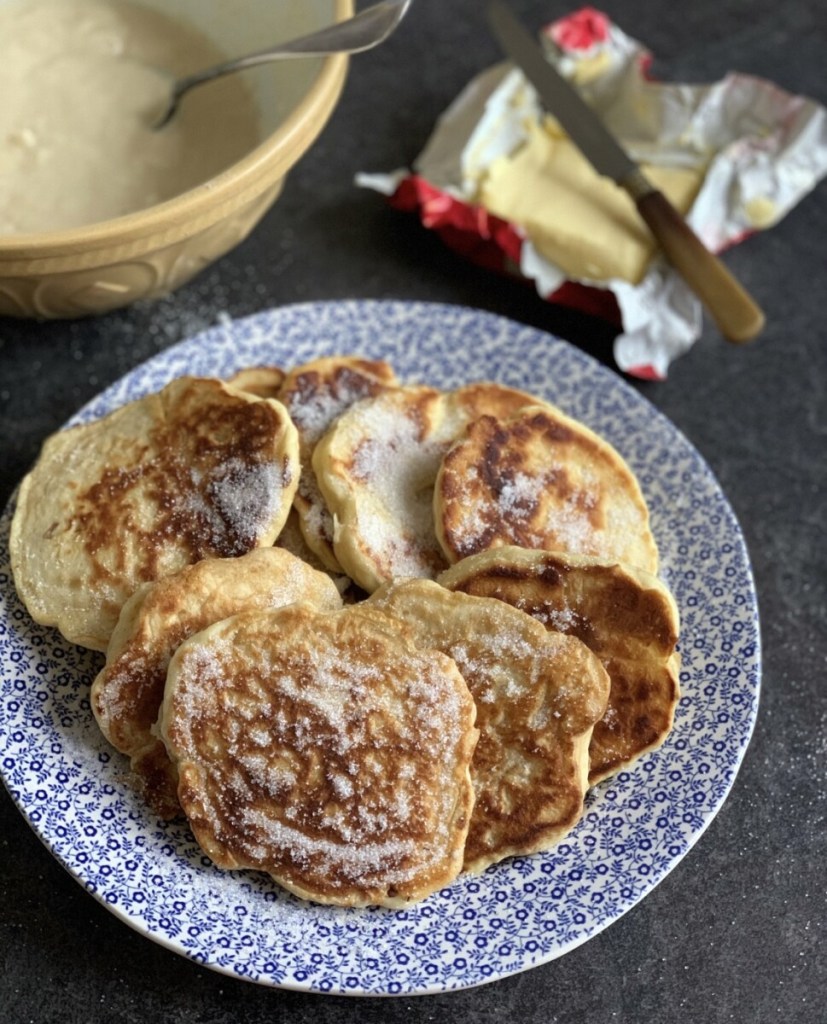
Welsh Variations on the Welsh Crempog (Crempogau)
- Cramwythen – plural Cramoth (parts of Carmarthenshire and Glamorgan)
- Crempog – plural – Crempogau (in the counties of north Wales, generally)
- Ffroesen – plural – Ffroes (parts of Glamorgan)
- Poncagen – plural – Poncagau (parts of Cardiganshire)
- Pancogen – plural – Pancocs (part of Pembrokeshire)
- Pancosen – plural – Pancos (parts of Carmarthenshire and Cardiganshire)
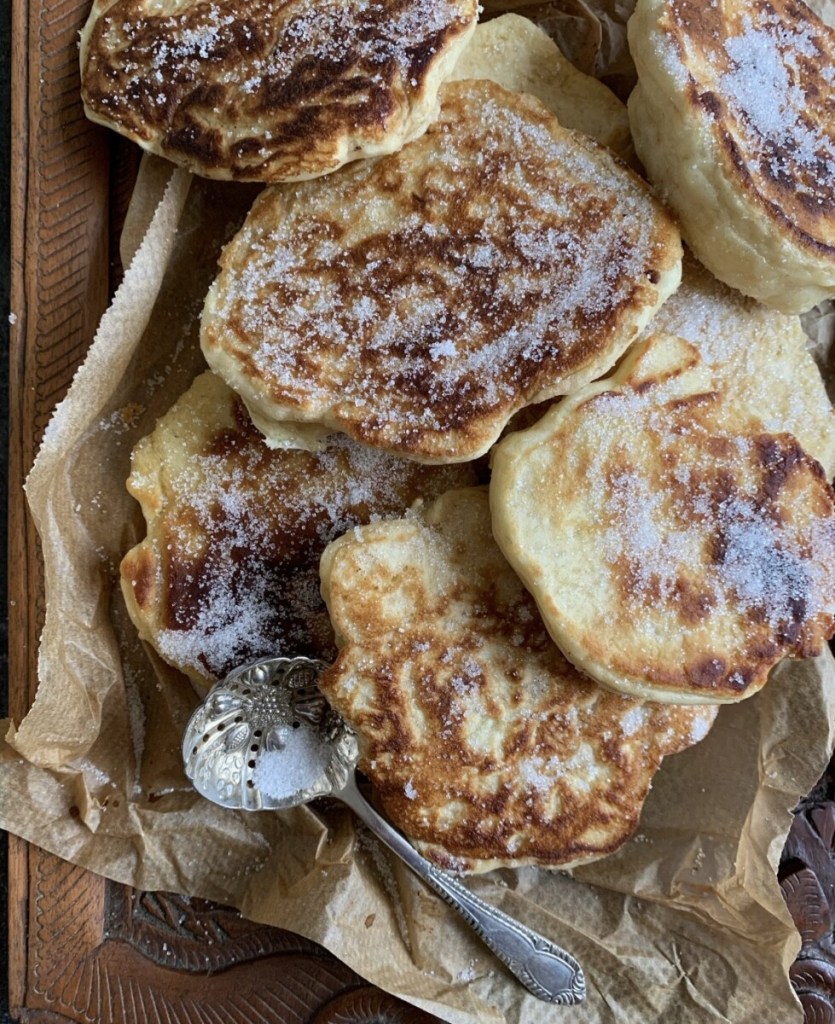
Notes on Cooking Welsh Crempog (Crempogau)
- To eat warm later, spread each crempog with a little butter, and layer them in a heatproof dish, cover, and keep warm in the oven at about 120C/250F.
- To eat immediately, as they are cooked, pile them onto a warm plate, then sprinkle them with caster sugar, and let everyone butter them before drizzling Golden Syrup over them.
- These freeze well and can be re-heated in the microwave, although they are also nice served cold with butter and jam.
- You can make these in crumpet rings for a neater shape. They would then be called Crempog Burum.
- If you don’t have any yeast or sourdough starter discard, then add an extra teaspoon of bicarbonate of soda, and proceed as in step 1 in the recipe card at the end of this post.
- The batter, whether you use yeast or not, is always better if it has been standing for a couple of hours, or it has been in the fridge overnight. Bring to room temperature before cooking.
- The traditional way to serve these is with butter and black treacle.
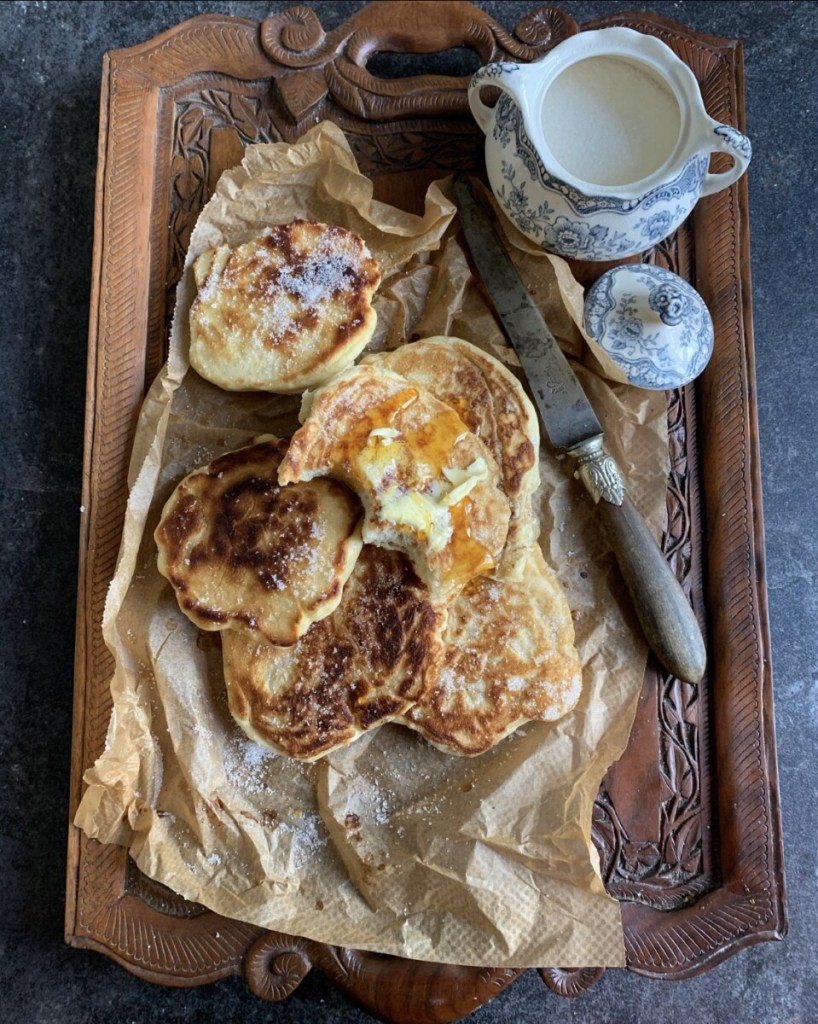
Pin Me to Cook Later
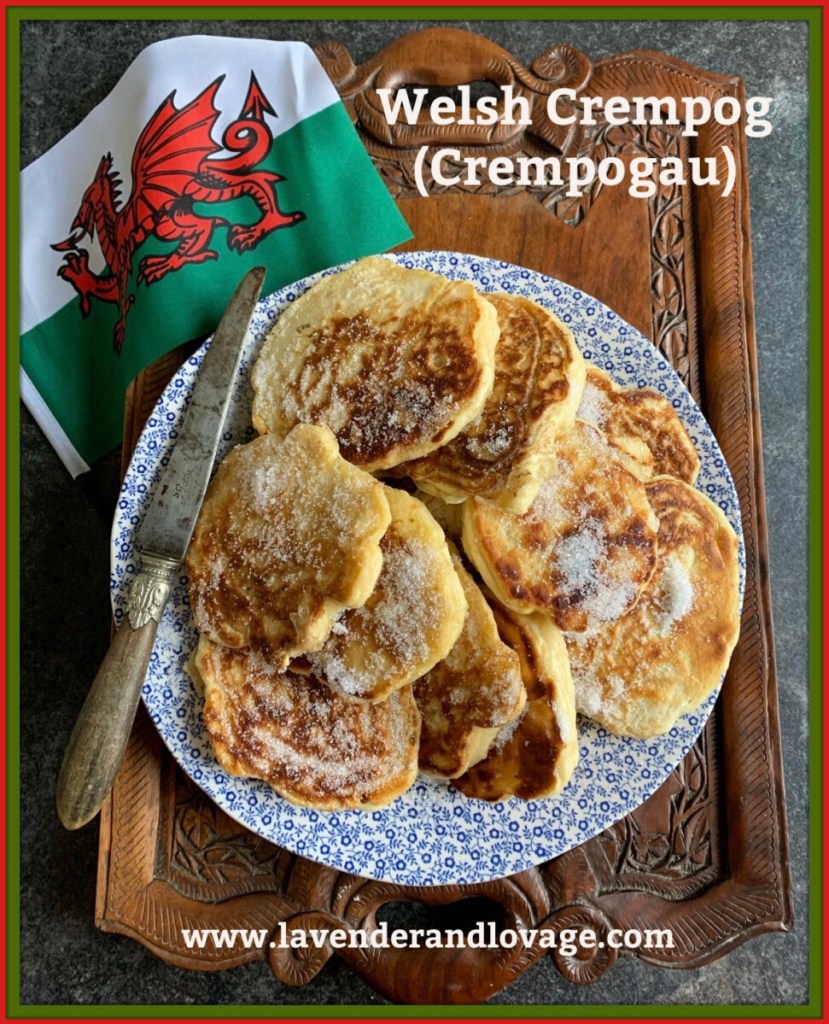
About St David’s Day
There are plenty of stories about Saint David (Dewi Sant in Welsh), though it can be hard to separate legend from fact. He’s reputed to have travelled widely, with some saying he made it all the way to Jerusalem where he became an archbishop.
He eventually established a strict religious community in what is now St Davids in south-west Pembrokeshire and became known both for his pious austerity and his ability to perform miracles.
Most famously, he is said to have caused the ground to rise up beneath his feet while preaching at Llandewi Brefi, so that all in the audience could hear his sermon. (Taken from Visit Wales)

Welsh Recipes on Lavender & Lovage
- Welsh Cawl (Lamb & Vegetable Stew)
- Leek & Chicken Casserole with Baked Dumplings
- Welsh Onion Cake
- Anglesey Eggs (Ŵyau Ynys Môn)
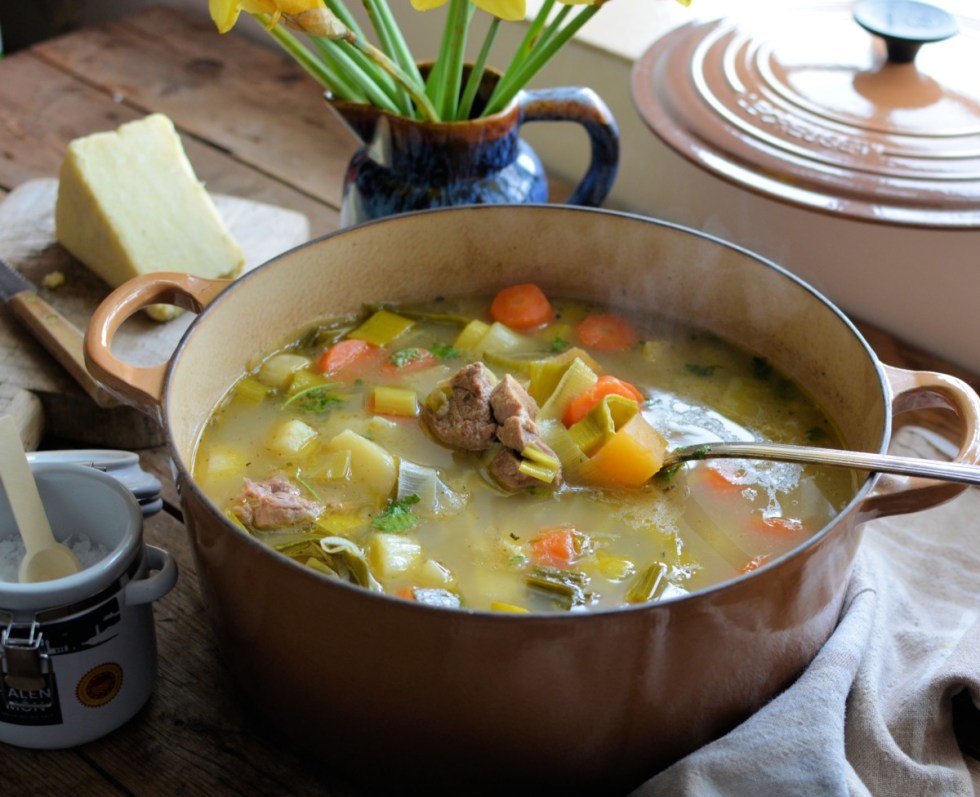
Welsh Cawl (Lamb & Vegetable Stew) 
Leek & Chicken Casserole with Baked Dumplings 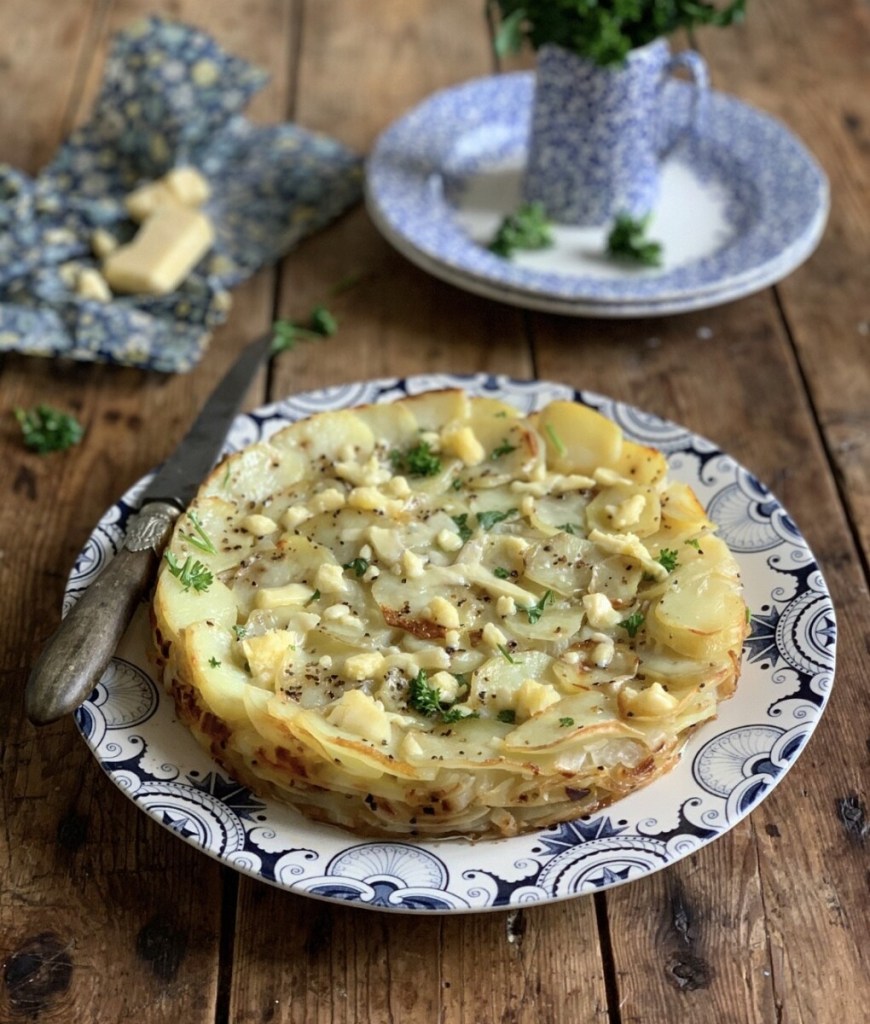
Welsh Onion Cake 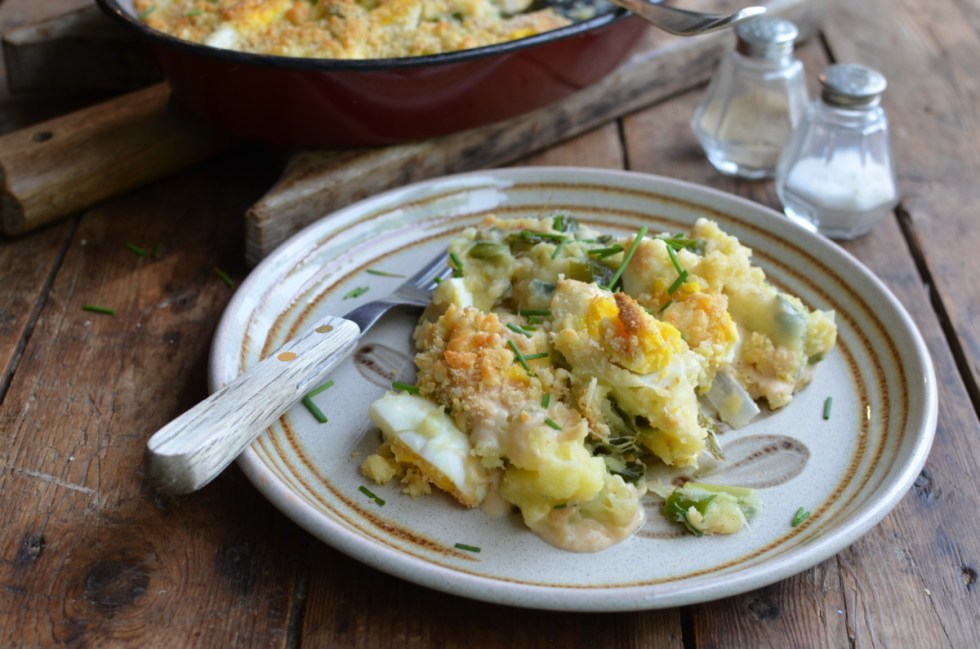
Anglesey Eggs (Ŵyau Ynys Môn)
- Traditional Welsh Cakes
- Teisen Lap Welsh Cake
- Welsh Shearing Cake (Cacen Gneifo)
- Traditional “Bara Brith” Tea Loaf
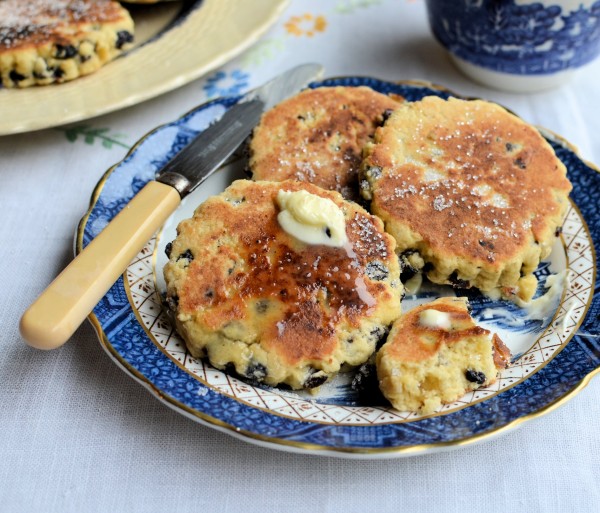
Traditional Welsh Cakes 
Teisen Lap Welsh Cake 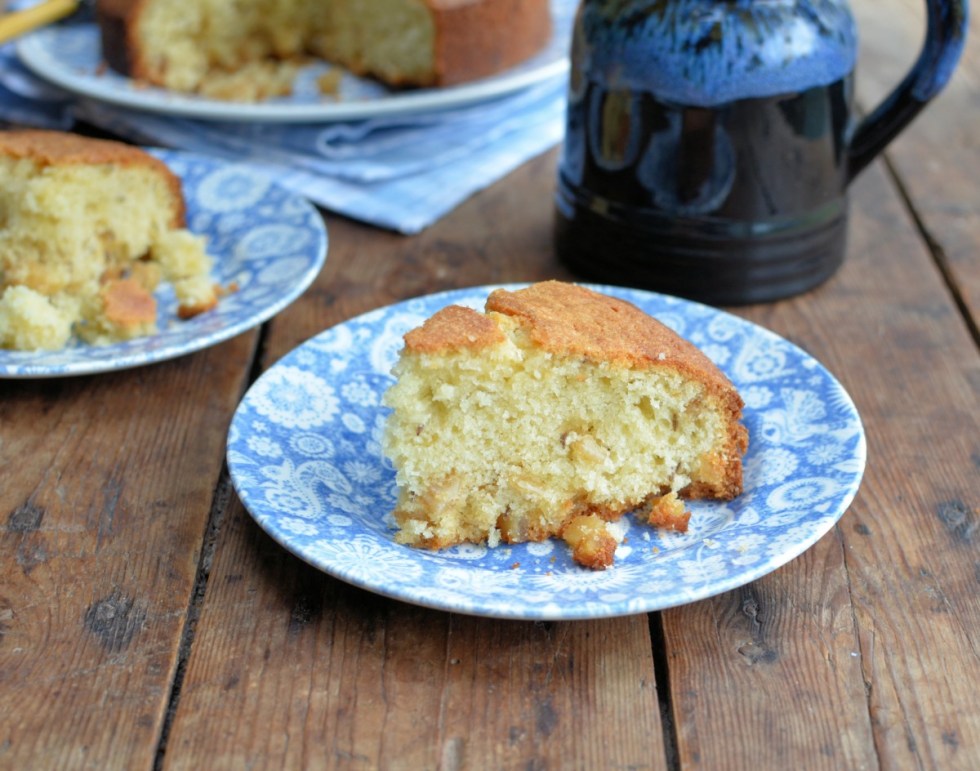
Welsh Shearing Cake (Cacen Gneifo) 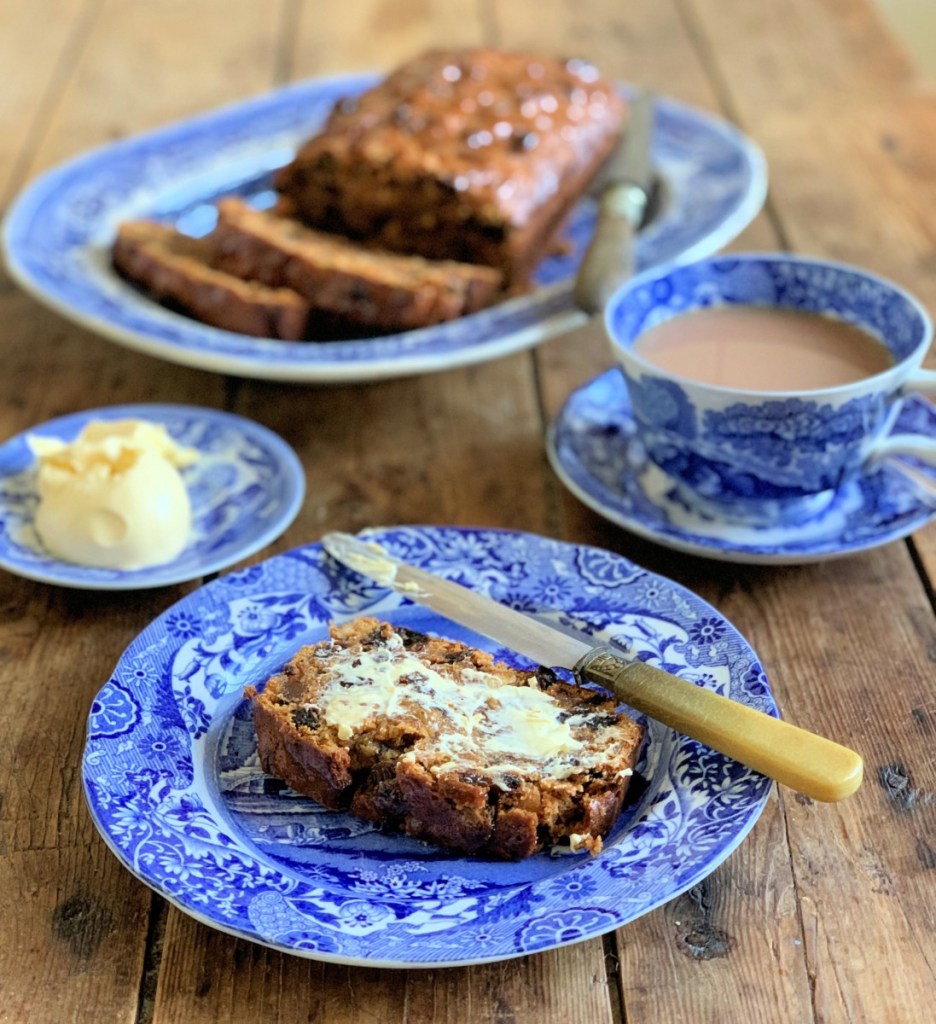
Traditional “Bara Brith” Tea Loaf
Pin Me Too for Later Cooking
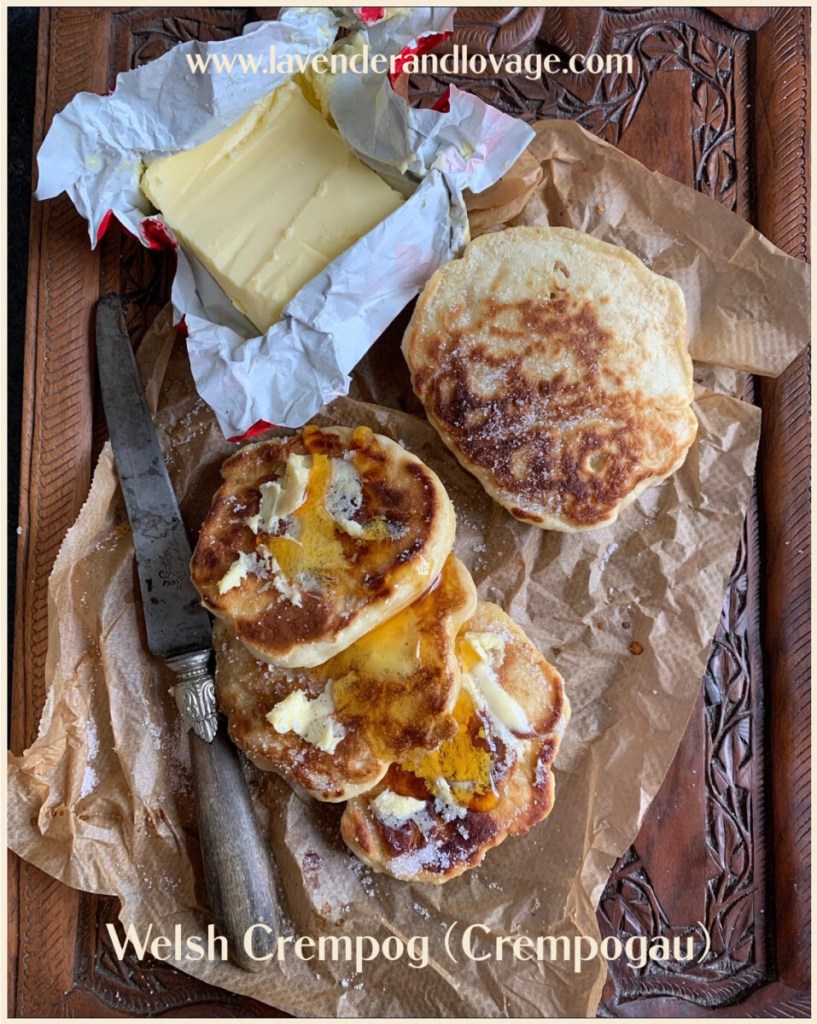
Recipe for Welsh Crempog (Crempogau)
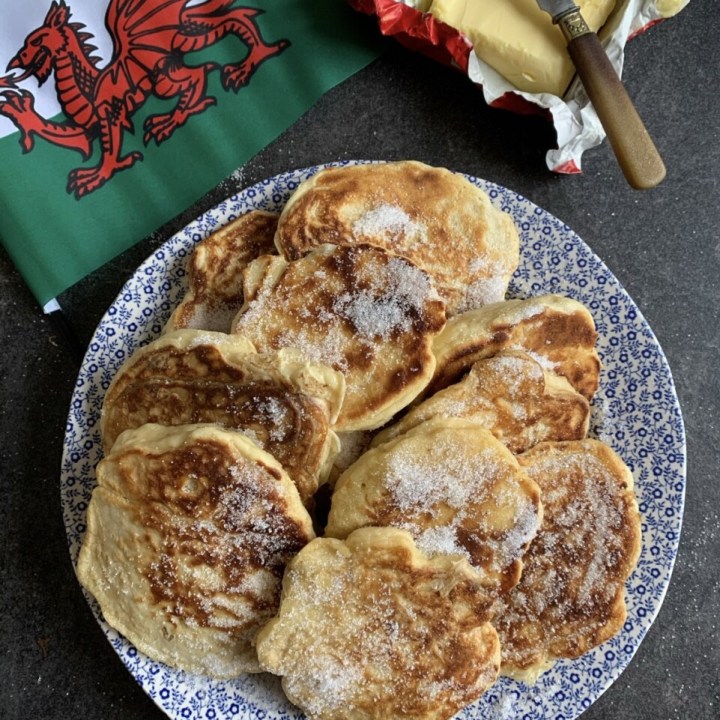
Welsh Crempog (Crempogau)
Today's recipe for Crempogau, or more correctly Crempog Furum, are based on an old recipe from 1800’s and one that uses yeast. Traditionally served warm and spread with butter and treacle, I’ve used golden syrup instead.
Crempog are Welsh pancakes, which are similar to pikelets and crumpets, and are traditionally served on birthdays, St David’s day, Shrove Tuesday (Pancake Day) and also on bonfire night on the 5th November.
Most modern recipes use bicarbonate of soda as the raising agent, but older recipes use yeast, as I have today, which results in a thicker pancake with fewer “holes”.
As soon as they are cooked, traditionally on a bakedstone, (also known as a planc in Wales, or a griddle and girdle in England and Scotland) they are sprinkled with sugar for immediate eating, or, they are spread with butter, covered and kept warm in the oven before serving warm with the sugar sprinkled before serving.
They are also delicious when served cold with butter, jam and/or syrup.
Ingredients
- 200mls buttermilk
- 1 teaspoon sugar
- 1 teaspoon bicarbonate of soda
- 1 x 7g sachet of fast action yeast OR 60g sourdough starter discard
- 250g plain flour, sifted
- 1/4 teaspoon sea salt
- 2 free-range eggs, beaten
- 50g butter, for frying and serving
- 2 tablespoons caster sugar
- Butter and golden syrup or jam, to serve
Instructions
- In a large jug, mix the buttermilk, sugar, bicarbonate of soda and the yeast of sourdough starter discard together, mix well and set it aside for 15 to 30 minutes.
- Add the salt to the flour, in a large mixing bowl, and once the buttermilk and yeast liquid has become bubbly, add it to the flour, mix well.
- Add the beaten eggs, mix well, then cover and set aside for up to 2 hours before cooking the crempogau.
- When you are ready to cook the crempogau, heat your bakestone (griddle) or large heavy based frying pan and add a knob of butter.
- Beat the crempogau mixture again, adding more buttermilk if it is too thick. (it should be like a thick batter in consistency, and drop very slowly from a spoon - it will not be pourable)
- Then drop spoonful's of the mixture onto the hot griddle, adjusting the heat to make sure they cook slowly so they don't burn before cooking all the way through.
- Turn them over half way though cooking, or when they have puffed up and there are small holes appearing on the surface of them.
- Cook on the second side until well risen and golden brown.
- To eat warm later, spread each crempog with a little butter, and layer them in a heatproof dish, cover, and keep warm in the oven at about 120C/250F.
- To eat immediately, as they are cooked, pile them onto a warm plate, then sprinkle them with caster sugar, and let everyone butter them before drizzling Golden Syrup over them.
Notes
These freeze well and can be re-heated in the microwave, although they are also nice served cold with butter and jam.
You can make these in crumpet rings for a neater shape.
If you don't have any yeast or sourdough starter discard, then add an extra teaspoon of bicarbonate of soda, and proceed as in step 1.
The batter, whether you use yeast or not, is always better if it has been standing for a couple of hours, or it has been in the fridge overnight. Bring to room temperature before cooking.
The traditional way to serve these is with butter and black treacle.
Nutrition Information
Yield 12 Crempog Serving Size 1Amount Per Serving Calories 176Total Fat 6gSaturated Fat 3gTrans Fat 0gUnsaturated Fat 2gCholesterol 43mgSodium 129mgCarbohydrates 27gFiber 1gSugar 7gProtein 4g

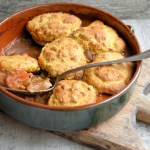
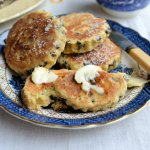
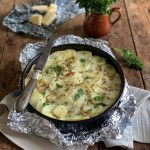



Choclette says
These look so delicious Karen. After seeing them on Instagram yesterday, I was very tempted to make some, but sadly ended up running out of time. CT introduced me to them, but I’ve only ever made them without yeast. Pinned.
Karen Burns-Booth says
Thank you Choclette, the yeasted one are more like crumpets, and are just as delicious! Karen
Louise Fairweather says
I have not heard of these before but they sound fantastic
Nic | Nic's Adventures & Bakes says
Thanks for sharing, they look lovely 🙂
Karen Burns-Booth says
Thanks Nic, My pleasure 🙂
Janet says
Thank you for your recipe. My mother made crempogau at home in Anglesey… and my sister continues the tradition. But just ine question… what is the measure of your tablespoon? I have just bought measuring spoons. The tablespoon is 15ml. My old fashioned tablespoon is actually nearer 30ml and the modern tablespoon is 20 ml. Too much choice. My mother used to use the tablespoon as a measure for an ounce of flour or sugar. ( a traditional large table spoon. Can you clarify what size is used in your recipes please.
Karen Burns-Booth says
Hi Janet, a tablespoon is 15ml (15g) and I have never known a tablespoon be bigger than that. I always use a 15ml (15g) tablespoon 🙂
Sarah Rees says
Thanks for your recipe and interesting background info. Just to say, we always knew golden syrup as “treacle” when I grew up in the 1950/60s, and I see Wikipedia describes golden syrup as “light treacle”, so my guess is that’s what might have traditionally been served with crempogau (just as we used to have “treacle” with a large batter pudding for “afters”).
Karen Burns-Booth says
Yes, that’s right – hence Treacle Tart and Treacle Pudding, both made with golden syrup. We used to have black treacle with bread sometimes. Karen